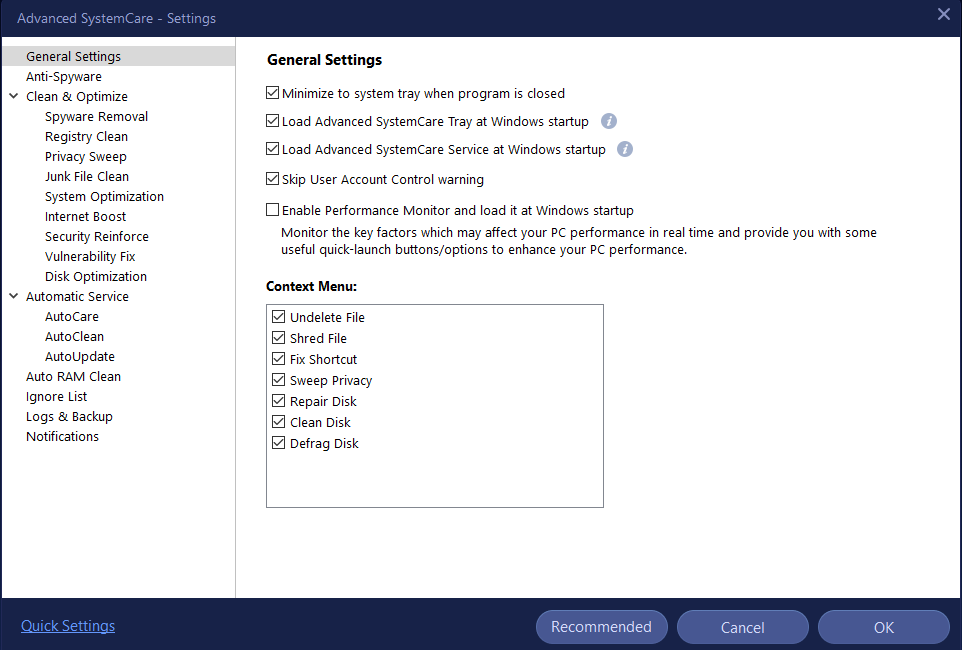System Cleanup Series: Advanced System Care
Learn how I use Advanced SystemCare to clean up junk, boost performance, and keep Windows running smoothly, while avoiding features I don’t recommend touching. Let’s walk through the setup together.
In this blog post exclusive to paid subscribers, we will focus on using Advanced SystemCare to perform a System Cleanup.
If you've been following my System Cleanup series, you know I like tools that actually get the job done without adding unnecessary complications. One of my go-to programs for this is Advanced SystemCare from IOBit. It’s packed with features that help clean up junk files, check for spyware, improve startup times, and even make small tweaks to how your system runs—without needing to know much about what’s happening behind the scenes.
In this post, I’ll walk you through how I use Advanced SystemCare, what I change in the settings, and what I don’t recommend touching (spoiler: stay away from the Registry cleaner). I use the paid version myself—it cuts out the ads and upselling—but the free version works just fine if you’re careful. Let’s take a look at how to get the most out of it without messing with the wrong settings.
This blog post is part of my System Cleanup series.
It does have a FREE version that will do a pretty good job. I like the extra features but don’t like the ads or upselling, so I pay for them. Given my frequent computer use, $27US feels like a worthwhile investment, and the license covers three computers.
It's often on sale for that price, and that price ONLY applies to the first year. After that, it goes up, but you'll get emails about that. Either way, I strongly recommend it.
It will do everything seen here, including erasing junk files, tidy up the registry, and much more.
Please UNCHECK the "Registry" option after the scan is complete. This does NOT need to be touched. See my warning below.
Advanced SystemCare is fairly straightforward. When opening it each time, you can immediately click the “Scan” button. It will scan for a variety of potential issues on your computer, including junk files, internet connection improvements, disk (hard drive) improvements, check that your antivirus is updated and working, scan for spyware threats, check to see if Windows itself is up to date, and check that programs are up to date.
I will note the “Registry” feature. The registry DOES NOT need to be touched. It is effectively the brain of Windows. If something goes horribly wrong, Windows may not continue to work properly. This feature is offered just because they can, and it gives you the impression you're doing something to help your computer. The minor improvements made are NOT worth the risk.
There is NEVER a good reason to make changes to the Registry for the minimal improvement that may result. It's just not worth it. Any tech who says otherwise should not be trusted.
Updating drivers using Advanced SystemCare persuades you to purchase Driver Booster. This is a tool I would also recommend as part of your System Cleanup.
Once it’s done scanning, click the “Fix” button in Advanced SystemCare, and it’ll take care of things. You will be bothered to close open programs first, though.
Go Into The Settings
Be sure to go into the settings to setup ASC how you would like it to function, including unchecking items you don’t want cleared, such as the image thumbnail cache. Though this can be manually done each time after a scan.
Aside from that, you’re done.
Table of Contents
System Cleanup Series: How To Use PatchMyPC to Keep Your Programs Up to Date
System Cleanup Series: Uninstall (Remove) Apps and Programs in Windows 11
Thank you so much for reading this blog post and being a paid subscriber! Your support makes my work possible.





